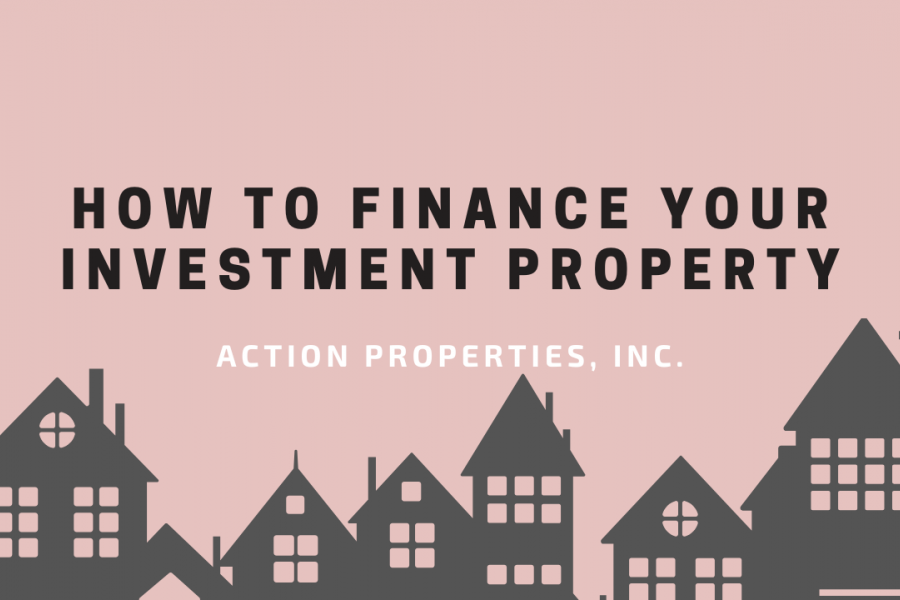
One of the biggest challenges in expanding your real estate portfolio is figuring out how to finance new investment properties. Without the right financial approach, you might find yourself facing high costs, difficulty securing loans, or missed opportunities in the market.
Traditional Mortgages
The most common way to finance an investment property is through a traditional mortgage. However, there are some differences between financing a primary residence and an investment property.
Requirements for Traditional Mortgages
- Credit Score. Your credit score is a key factor that determines both your eligibility for a mortgage and the interest rate you'll be offered.
- Down Payment. For investment properties, lenders usually require a higher down payment than they would for a primary home.
- Debt-to-Income Ratio (DTI). Lenders also look at your DTI ratio, which is the percentage of your income that goes toward paying debts. A lower DTI will make it easier to qualify for a mortgage.
Cash-Out Refinance
If you already own property, another option to finance a new investment is through a cash-out refinance. The difference between the new loan and the remaining balance is given to you as cash, which can then be used to purchase additional investment properties.

Benefits of Cash-Out Refinancing
- Lower Interest Rates. Refinancing allows you to take advantage of potentially lower interest rates compared to other forms of financing.
- No Additional Debt. You’re not taking out a new loan; instead, you’re leveraging the equity you’ve already built.
- Tax Benefits. In some cases, the interest you pay on a cash-out refinance may be tax-deductible if the funds are used for further investments.
However, keep in mind that this method will increase the mortgage balance on your current property, and it may extend the time it takes to pay off that loan.
Home Equity Line of Credit (HELOC)
A home equity line of credit (HELOC) is another way to leverage the equity in your existing property. Unlike a cash-out refinance, which provides a lump sum, a HELOC gives you access to a revolving line of credit, which you can draw from as needed.
Key Features of a HELOC
- Interest Rates. HELOCs typically come with adjustable interest rates, which may be lower initially but could increase over time.
- Flexible Borrowing. You can borrow as much or as little as you need, up to your credit limit.
- Repayment Terms. The repayment structure of a HELOC varies, but most have an initial draw period (usually 5-10 years) where you can borrow money and only pay interest. Once this phase is over, you will be required to begin paying back both the principal amount and the interest.
This option can be advantageous if you want ongoing access to funds to invest in properties over time.

Private and Hard Money Lenders
For landlords who may not qualify for traditional financing, or who need quick access to funds, private or hard money lenders can be a useful alternative. These lenders are typically individuals or companies willing to provide short-term loans secured by the property itself.
Differences Between Private and Hard Money Lenders
- Private Lenders. These are usually individuals or small companies that offer flexible loan terms based on personal relationships or mutual investment goals. Private loans are typically more negotiable but can vary widely in terms of interest rates and loan conditions.
- Hard Money Lenders. Hard money lenders are professional lenders that specialize in real estate loans, offering quick funding based on the value of the property rather than your creditworthiness. That said, these lenders frequently impose higher interest rates and additional fees.
Pros and Cons
- Faster Approval. Private and hard money loans can be approved and funded much more quickly than traditional mortgages, making them ideal if you need to act fast in a competitive market.
- Higher Interest Rates. In exchange for fast funding and fewer requirements, you’ll likely face higher interest rates and shorter repayment periods, which can increase your overall costs.
- Risk. These loans are usually secured by the investment property itself, so if you default, you could lose the property.
Portfolio Loans
If you own multiple rental properties, you may be eligible for a portfolio loan. These are specialized loans offered by banks or mortgage lenders that allow you to finance several investment properties at once, often under more flexible terms than traditional mortgages.

Why Choose a Portfolio Loan?
- Consolidation. Instead of having multiple mortgages for each property, you can consolidate your loans into one, simplifying your finances and potentially lowering your overall costs.
- Flexibility. Portfolio loans are usually more flexible with regard to credit requirements, down payments, and property types, making them a good choice for investors with complex portfolios.
- Higher Borrowing Limits. Since portfolio loans are tailored for investors, they often come with higher borrowing limits, allowing you to grow your portfolio more easily.
The downside is that these loans may come with higher interest rates and fees, so it’s important to compare the total cost with other financing options.
Seller Financing
In certain situations, it might be possible to arrange financing terms directly with the property owner. With seller financing, the seller essentially acts as the lender, allowing you to make payments directly to them instead of going through a bank.
Advantages of Seller Financing
- Fewer Requirements. Since you’re dealing directly with the seller, you may be able to bypass strict credit checks or large down payments.
- Flexible Terms. The terms of the loan are negotiable, allowing you to work out an arrangement that fits your needs and the seller's preferences.
This option can be ideal for landlords who have difficulty securing traditional financing, but it may come with higher interest rates or a shorter repayment period.

Government-Backed Loans
For landlords who want to finance multifamily properties, government-backed loans such as those offered by the Federal Housing Administration (FHA) or the Department of Veterans Affairs (VA) can be a useful option.
FHA Loans for Multifamily Properties
- Low Down Payment. FHA loans allow for down payments as low as 3.5%, even for investment properties, as long as you live in one of the units.
- Easier Qualifications. FHA loans typically have more lenient credit requirements, making them accessible for first-time investors.
VA Loans for Veterans
If you’re a veteran, you may qualify for a VA loan, which allows you to purchase a multifamily property with no down payment. Similar to FHA loans, you must live in one of the units to qualify.
Bottom Line
Financing investment property is a critical step for any landlord looking to grow their portfolio. With options ranging from traditional mortgages to seller financing, it's important to choose the method that best suits your financial situation and investment goals.
At Action Properties, Inc., we specialize in helping landlords navigate the complexities of financing investment properties. Reach out to us today to discover how we can assist you with your property management needs.